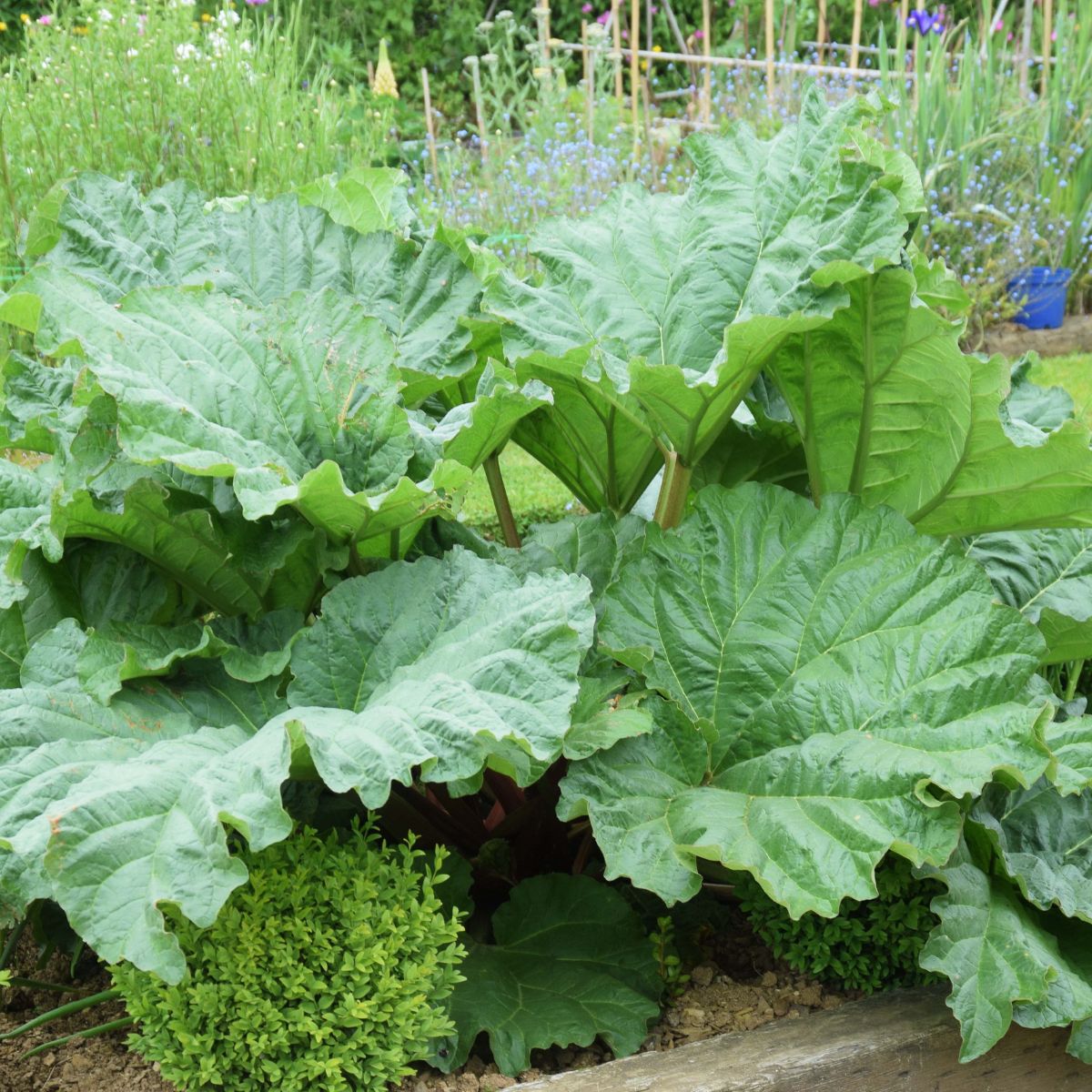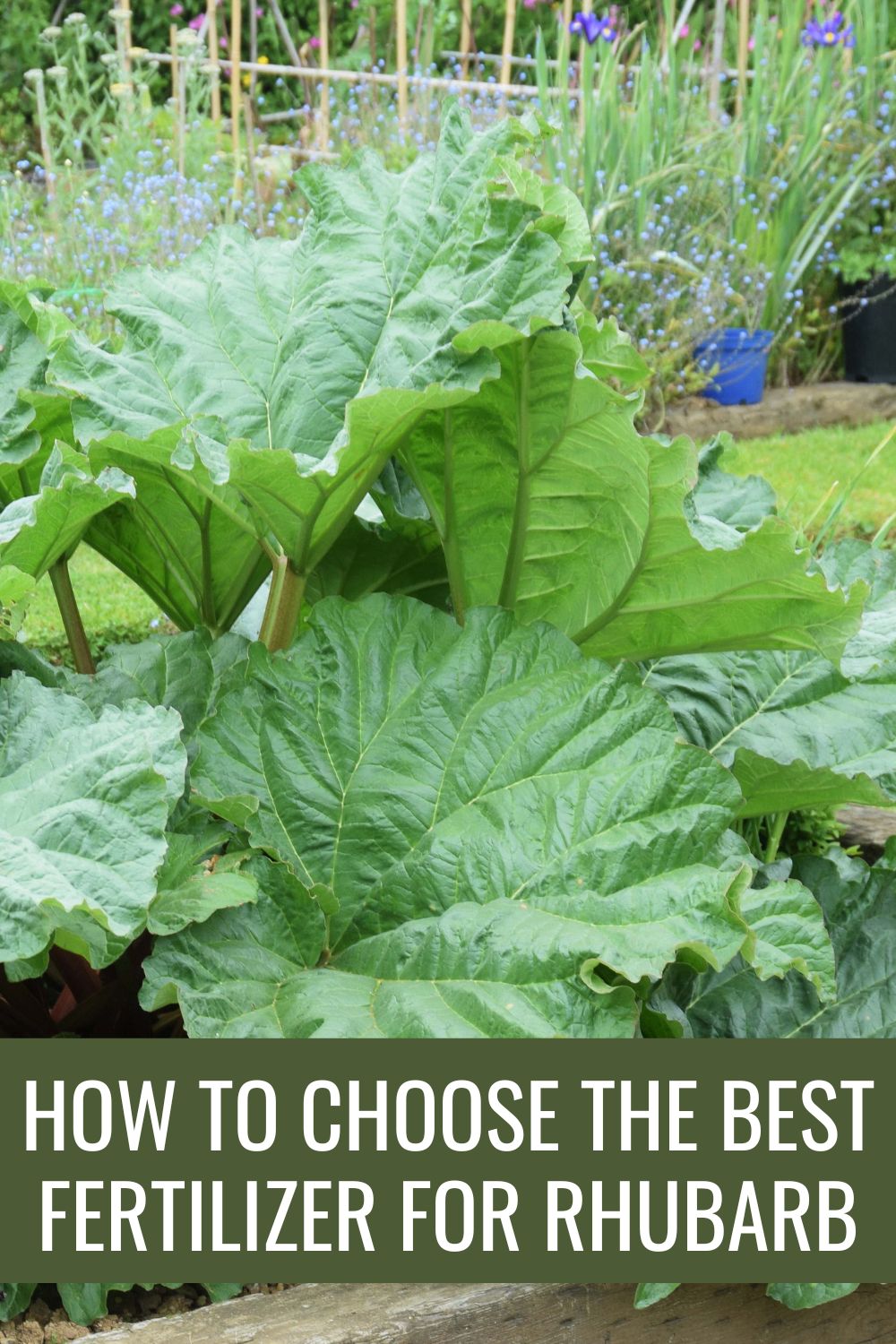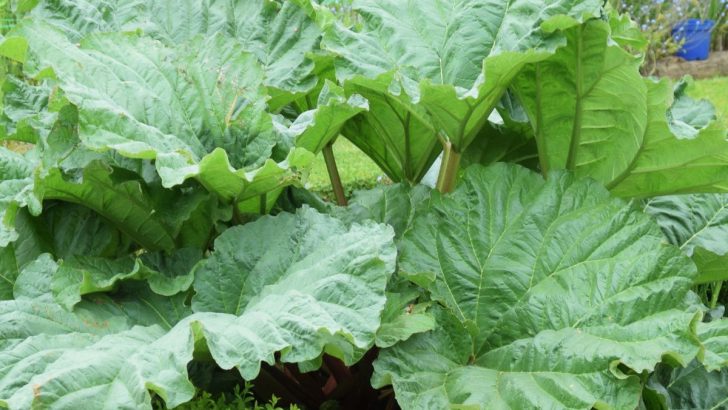If you seek a delicious perennial vegetable to grow in your veggie patch, you can’t go wrong with rhubarb (Rheum rhabarbarum). The tart, fruity stem is ideally suited to being made into jams, jellies, pies, and more. Rhubarb is a heavy feeder and relies on a good nutrient supply to grow optimally, leading to the question of which would be the best fertilizer for rhubarb.

Although relatively easy to grow, rhubarb will benefit from proper fertilization. To best care for your rhubarb, you should use the correct fertilizer, which can be a store-bought fertilizer with the right NPK value or a homemade organic version. Knowing which fertilizer suits your rhubarb’s nutrient requirements and when you should fertilize will help ensure that your rhubarb grows optimally for years.
Rhubarb grows best when fed a 10-10-10 fertilizer at the beginning of spring and in late fall. You can also use a mixture of organic ingredients, such as manure, super-phosphates, bone meal, or worm castings, to produce a similar nutrient fix.
What Is the Best Fertilizer for Rhubarb?
Since rhubarb plants are heavy feeders, they require a good dose of nutrients in order to grow lush and healthy. The best way to accomplish this is to find an appropriate fertilizer and use it when necessary. As a long-lasting vegetable, rhubarb can continue to grow for more than ten years, so you should develop a fertilizing regime and make sure to follow it throughout the years.
Lack of essential nutrients can cause the plant to produce flower stalks (and consequently seed stalks), and as a result the plant will stop producing new growth as it uses its energy to produce the rhubarb seed. By the way, as soon as you see the flowers appear, cut them with a sharp knife and discard them (throwing them into the compost heap works great!). This way you’ll have healthy plants.
For optimal growth, rhubarb requires an annual feeding in the early spring, starting on the second year, before the beginning of the growing season. First year young rhubarb plants don’t need fertilizer, but it’s a good idea to feed older plants and add some grass clippings at the base to keep the soil moist.
There is a range of fertilizers available on the market today, but the best option for your rhubarb is one that consists of a 10-10-10 mixture.
The “10-10-10” refers to the NPK value of the fertilizer, which is the level of nitrogen (N), phosphorus (P), and potassium (K) present in the fertilizer. That means that the fertilizer contains 10% of each of these elements. These elements are the primary nutrients every plant needs to survive.
When using this fertilizer, you only need to apply a light sprinkling of your chosen brand around your rhubarb stems, at the base of the plant. The usual dosage is approximately a half cup around the stems of each plant. Water it in well after application. Avoid at all costs getting it onto the crown of your plant or allowing it to touch the stem, especially if the plant is still young. It is also not ideal to get fertilizer on a plant you plan on eating.
Some of the better choices for a 10-10-10 fertilizer include the following:
- Hyponex All Purpose Garden Fertilizer 10-10-10 — This fast-releasing fertilizer, available at your local Home Depot, is easy to use and gives your rhubarb plants enough nutrients to produce healthy, full-sized stems.
- Osmocote Smart Release Plant Food Flower & Vegetable (14-14-14) — This fertilizer is one of the best slow-release fertilizers. It is easy to apply, has long-lasting effects, and can be used in garden beds or containers.
- Lily Miller All Purpose Planting & Growing Food 10-10-10 — This product has the perfect ratio of nutrients for your rhubarb. It is easy to use with concentrated, fast-acting ingredients and a slow-releasing formula, ensuring that your rhubarb has a lush, steady growth rate.
Disadvantages of Using 10-10-10 Fertilizers on Your Rhubarb
Although most gardeners swear by their 10-10-10 fertilizer and insist that this formula is the best you can give your rhubarb, this doesn’t mean that there aren’t some downsides to providing your vegetables with a chemical fertilizer.
One of the significant disadvantages of any inorganic fertilizer is that it can crust on the topsoil instead of soaking into the roots. These fertilizers are also not a great long-term solution but rather a quick fix. In some cases, depending on the brand of fertilizer you use, they can contain harmful chemicals.
The labels on these fertilizers remind you to wear protective gear when applying them and to not use them around children. This information should make you wonder whether or not they are safe on your food crops.
Other issues can arise from using these inorganic fertilizers, including nitrogen runoff into nearby waterways or your fish ponds, if you have any. Excess nitrogen can be harmful and toxic to fish. It also promotes algal growth.
Alternative Organic Fertilizers
Organic fertilizers are a great option because they come from natural sources such as bone meal, compost, manure, kelp, fish emulsion, worm castings, and green sand. Although the NPK formula is excellent for growing plants, plants need more than 70 nutrients to grow optimally, and organic fertilizers help give your rhubarb an extra edge.
An easy way to fertilize your rhubarb organically is by applying a two- to three-inch layer of organic material or well-rotted manure around the base of your plants. Fresh manure can burn your plants, so you must ensure that whichever manure you choose is fully composted. One benefit of manure is that it adds valuable organic matter to the soil.
Well-rotted cow manure is a good option, and you can apply this in the early spring once you see new shoots starting to grow. You can supplement this manure with a quarter pound of superphosphate (0-40-0) around the stems of each plant.
Several options are available when it comes to super-phosphates, but two good ones include:
- Easy Peasy Triple Super Phosphate 0-46-0 — This product is super easy to use and of the highest quality. It is perfect for indoor and outdoor growth and will help with your rhubarb’s root and plant growth.
- Bonide Triple Super Phosphate 0-45-0 — This granular fertilizer is an excellent option, as it stimulates root and plant development and it’s very easy to use.
If you are looking for the perfect fertilizer to use on your rhubarb plants, you can’t go wrong with a good 10-10-10 fertilizer. This kind of fertilizer has the ideal ratio between NPK values and will help your rhubarb grow at its best. If you prefer to go the organic route, compost or well-rotted manure with a superphosphate supplement will work wonders.
Now that you know how to fertilize rhubarb, you’ll have a nice, healthy rhubarb patch with plenty of delicious stalks for rhubarb pie. Enjoy!
Here are more fertilizing guides:





The Best Fertilizer For Lavender
Sunday 16th of April 2023
[…] best fertilizer for rhubarb […]